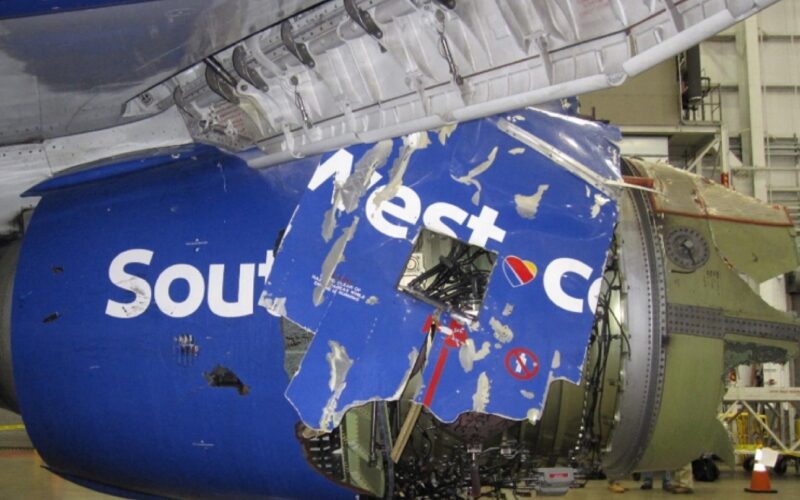The United States Federal Aviation Administration (FAA) has put forth a proposal for a new airworthiness directive (AD) targeting specific models of Boeing aircraft, namely the 737–600, –700, –700C, –800, –900, and –900ER series airplanes.
This proposed AD comes in the wake of two engine fan blade-out (FBO) incidents, both resulting in the separation of engine inlet cowl and fan cowl parts from the aircraft, causing damage to the fuselage, loss of pressurization, and necessitating emergency descents.
One of the engine failures led to a passenger being sucked out of her seat due to explosive decompression, fatally wounding her. The incident took place when a Southwest Boeing 737-700, registered as N772SW, was operating flight SW1380 between New York LaGuardia Airport (LGA) and Dallas Love Field (DAL) in April 2018.
The FBO events further led to the identification of cracks in the primary exhaust nozzle, posing additional risks such as the potential detachment of the primary exhaust nozzle, potentially damaging a stabilizer, or impacting the fuselage and windows. To address these safety concerns, the proposed AD outlines mandatory measures for affected aircraft.
The key provisions of the proposed AD include an inspection or a thorough examination of maintenance records to determine if the primary exhaust nozzle possesses an affected part number. For those identified as having the affected part, the AD mandates the installation of bridge brackets onto the primary exhaust nozzle. Alternatively, operators have the option to install a serviceable primary exhaust nozzle.
In addition to the specific modifications, the proposed AD requires a revision of the existing maintenance or inspection program to incorporate new airworthiness limitations. These measures are intended to mitigate the identified safety risks and ensure the continued airworthiness of the Boeing 737NG fleet.
The FAA emphasizes that the proposed AD aims to address the unsafe condition observed in these aircraft models, with a focus on preventing similar incidents in the future. The aviation community is encouraged to provide feedback during the comment period, which concludes on January 26, 2024.
Following this period, affected operators are expected to implement the necessary modifications to comply with the new airworthiness directive before the specified deadline of July 31, 2028.
The FAA estimates that 1,215 aircraft in the US registry will be affected.

